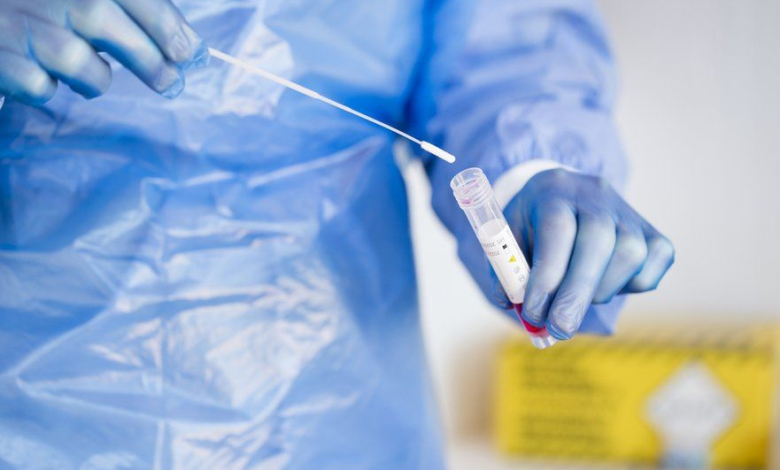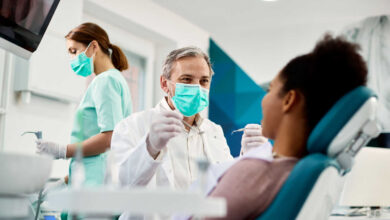What is the PCR test?

Diagnosing infectious illnesses and genetic mutations is made easier with the rapidity and accuracy of PCR (polymerase chain reaction) assays. Pathogens (disease-causing organisms) or aberrant cells can be found in a sample utilizing DNA or RNA testing. DNA is the genetic material that contains all living things’ instructions and information.
In addition to DNA and RNA, there is another form of genetic material called chromatin. To produce proteins, it carries information that has been copied from DNA. DNA and RNA are the building blocks of most viruses and other diseases.
PCR tests, in contrast to many others, can detect illness signs as early as the first stages of infection. There may not be enough viruses, bacteria, or other pathogens in your sample to generate an antibody response, so other tests may miss early symptoms of the disease. In order to combat pathogens like viruses and bacteria, your immune system produces antibodies, which are proteins. PCR testing can detect sickness even if your body has just a very tiny number of pathogens. PCR tests are extremely sensitive.
Samples of genetic material are replicated numerous times during PCR testing. It is called amplification when it is duplicated. Amplification will make pathogens in the sample much more visible if any are present.
The process is also known as polymerase chain reaction, rtPCR, reverse transcription polymerase chain reaction, real-time polymerase chain reaction, and quantitative polymerase chain reaction.
What is the purpose of them?
You can run PCR testing to:
- Determine the presence of specific contagious illnesses.
- Look for changes in a person’s DNA that can lead to disease
- Find cancer cells that would otherwise go unnoticed in conventional tests.
How do they operate?
PCR testing are carried out in the following manner:
- Snatching a speck of tissue or a drop of blood
- A pathogen or cancer cell’s DNA may be mixed in with your own.
- A particular machine is used to process the sample. The sample is supplemented with an enzyme known as polymerase. As a result, copies of the sample are made. The procedure of copying is done numerous times. It takes around an hour to make one billion copies. The machine will identify if there is a virus or pathogen present.
- There are viruses, such as COVID-19, that are composed of RNA rather than DNA. Before replicating, RNA in these viruses must be converted to DNA. This is known as reverse transcription polymerase chain reaction (PCR) (rtPCR).
- A pathogen’s presence can be detected using PCR and rtPCR. Quantitative PCR (qPCR) is a form of PCR used to count the number of pathogens present in a sample. qPCR and PCR can be performed simultaneously.
When is a PCR performed?
There are a variety of approaches to obtain a PCR sample. Nasal swabs and blood testing are two often used procedures.
A tiny needle will be used to draw blood from a vein in your arm by a medical practitioner during a blood test. A small amount of blood will be taken once the needle is put into a test tube or vial. It’s possible that the needle will pierce your skin. This normally only takes a few minutes to complete
You can have a nasal swab collected from the tip of your nose (anterior nares). Swabs from the rear of the nostrils, called a “nasal mid-turbinate” (NMT) swab, or from the roof of the nose, called the “nasopharynx,” can also be used. Occasionally, a doctor will ask you to perform an anterior nares test or a sample of the nasal mucus.
- You begin the anterior nares test by turning your head backwards. the provider will then:
- In the nostril, gently insert the swab.
- Place the swab in a circular motion and hold it there for 10–15 seconds.
- Swab your second nose with the swab you just removed.
- Using the same method, swab the second nostril.
Do not use the swab.
You will begin by turning your head backward during an NMT swab. Afterwards, you or your service provider will do the following:
- To use, gently push the swab into the nostril until you feel resistance from the swab.
- 15 seconds of rotating the swab
- Swab your second nose after removing the first swab.
- Use the same approach on the other nostril.
- Take out the swab.
- Before and after an in-office nasopharyngeal swab
- Because your head will be tilted back,
- In order to get to your nasal cavity, your doctor will push a swab via the nose and into your pharynx (the upper part of your throat).
- The swab will be rotated and removed by your healthcare provider.
- Is there anything I should study for this exam. For a PCR test, you don’t need to make any specific preparations.
Is there a chance that a PCR test could cause harm?
The risk of a blood test is extremely low. Even if you’re still experiencing some discomfort at the site where the needle was inserted, the majority of your symptoms will shortly subside.
Your throat may be tickled or you may cough after using a nose swab. Coughing and gagging are common side effects of a nasopharyngeal swab. Everything here is only going to last for a short time.
Any other information concerning PCR tests is required?
Many infectious diseases can be identified with PCR testing, which are accurate and trustworthy. Furthermore, PCR tests are vital in reducing the spread of infections since they are often able to establish a diagnosis before the symptoms of infection appear.
Read more: How to Find a Private Covid Testing



